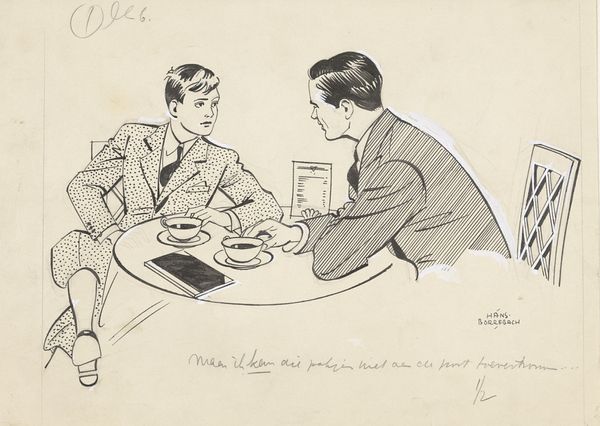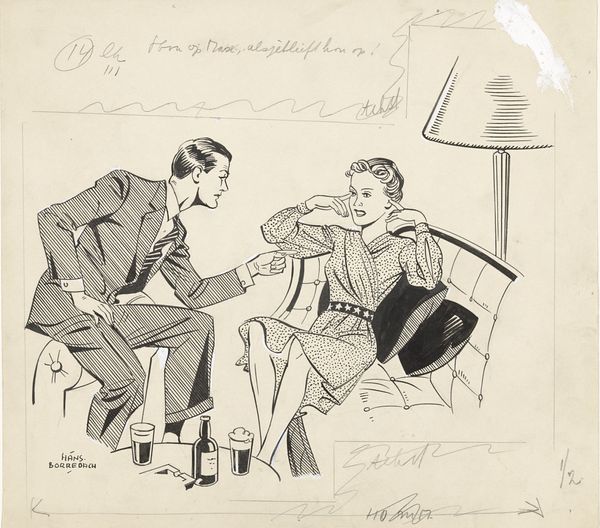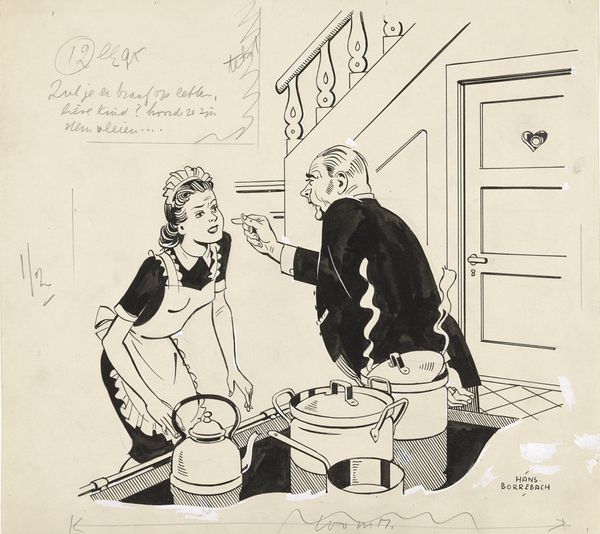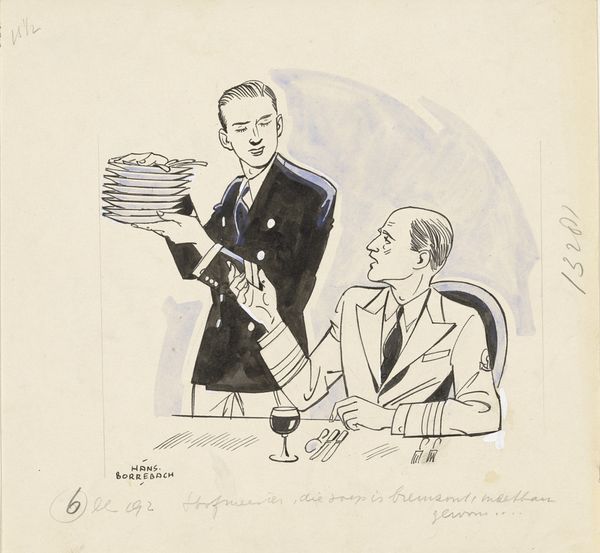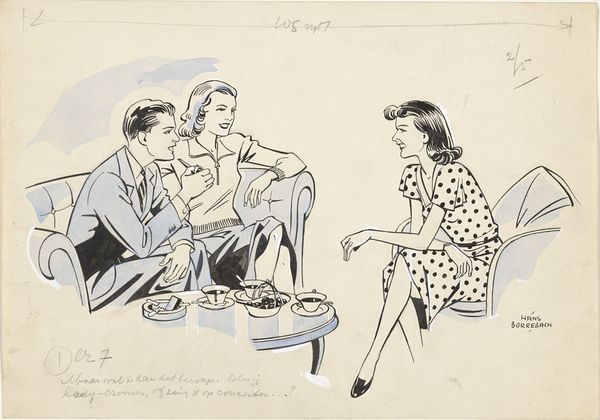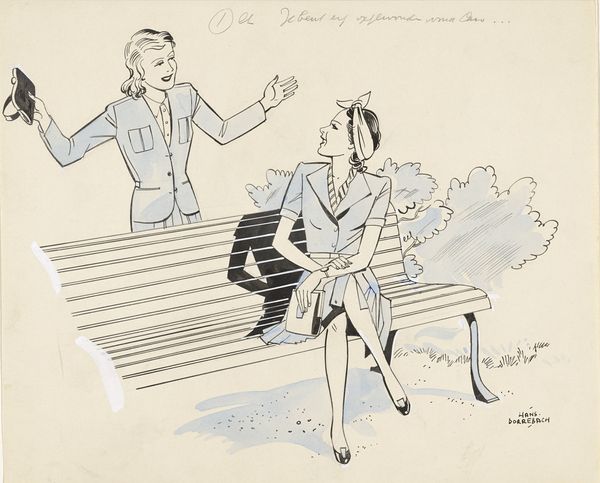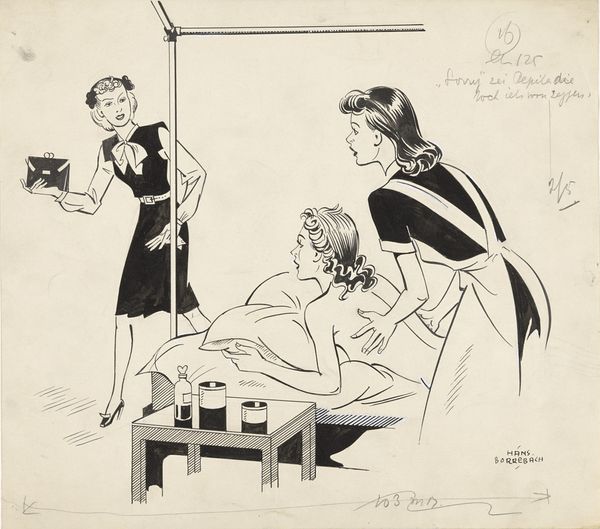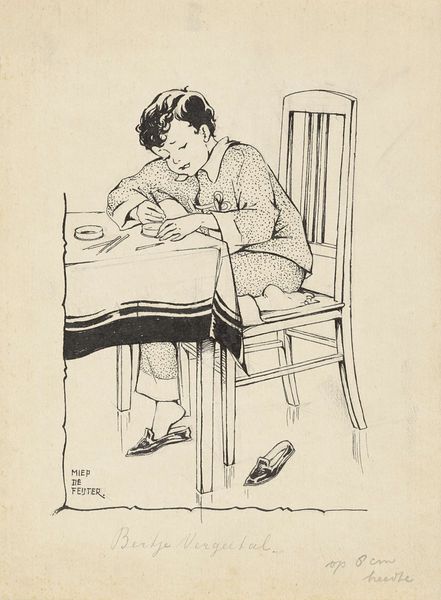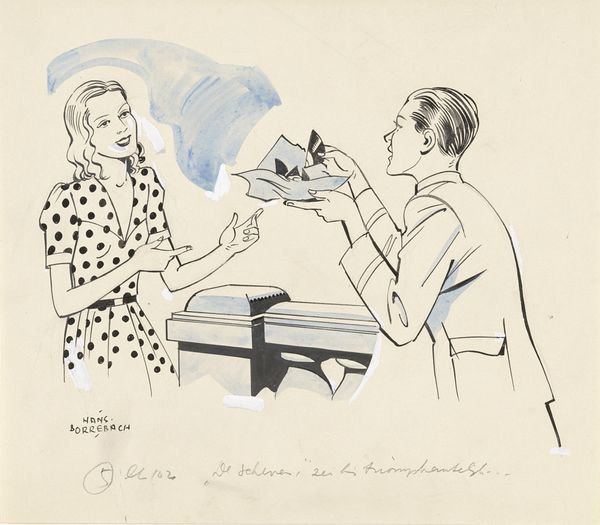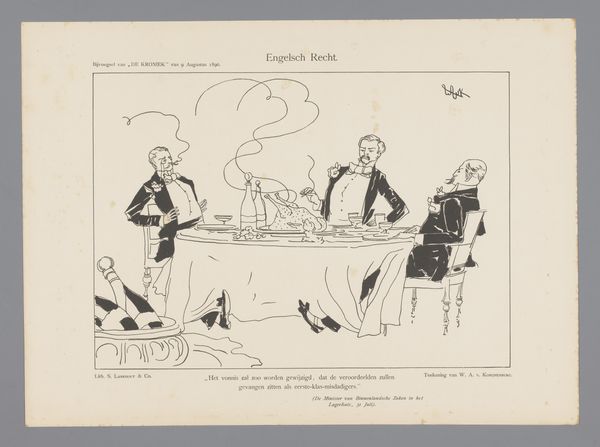
drawing, ink
#
portrait
#
drawing
#
blue ink drawing
#
narrative-art
#
caricature
#
caricature
#
ink
Dimensions: height 208 mm, width 227 mm
Copyright: Rijks Museum: Open Domain
Curator: This ink drawing by Hans Borrebach, "Man commandeert een vrouw haar bord leeg te eten", which translates to "Man commands a woman to empty her plate," made before 1954, feels quite confrontational, doesn't it? The woman looks so resigned. What strikes you most about this piece? Editor: I'm intrigued by the sparseness of the medium. It's just ink on paper, yet it evokes a whole narrative. The raw quality of the lines makes me wonder about the artist’s process and what he's trying to say about labour within a domestic setting. Can you expand on that? Curator: Certainly. Look at the way Borrebach employs a basic, accessible medium like ink. It democratizes the art form, doesn't it? This wasn’t about high art; it's rooted in everyday social dynamics, accessible to a wider audience through readily available materials. The *making* becomes the message, highlighting domestic tensions, likely intended to critique power imbalances using accessible, mass-produced means. The original caption states "Eat it! Eat it all; the whole pan will be emptied otherwise…" It implies the historical presence of resource inequality in relationship dynamics. Editor: That’s fascinating! I hadn't considered the ink itself as part of the commentary, a method of resistance against the structures depicted within. It does kind of flatten art and lived experience in the making. Curator: Exactly! The caricature style emphasizes social critique and its accessibility within the culture. The artwork then isn't just about what’s depicted, but *how* it’s depicted, emphasizing that it's not only about what is present on the dinner table, but who has access to it. It prompts questions about the labor involved in food production and the dynamics of consumption in family units. Editor: This materialist perspective completely transforms how I see the drawing, moving beyond the surface to understand the broader cultural implications of its creation. Curator: Indeed, considering the "how" often enriches our appreciation far beyond the surface-level observation.
Comments
No comments
Be the first to comment and join the conversation on the ultimate creative platform.

